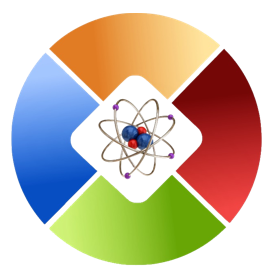The IAEA supports Member States in the area of advanced fast reactor technology development by fostering information exchange and collaborative research and development, aimed at improving Member State capabilities in fast reactor design and analysis.
This new IAEA Coordinated Research Project (CRP) will focus on a benchmark analysis of one of the passive safety demonstration tests performed at the Fast Flux Test Facility (FFTF), a 400 MW (Th) sodium cooled nuclear test reactor owned by the US Department of Energy.
The Pacific Northwest National Laboratory (PNNL) and the Argonne National Laboratory (ANL) jointly proposed this CRP to the IAEA in 2017, offering to share experimental test data with the fast reactor community through the IAEA. At its 50th meeting in May 2017, the Technical Working Group on Fast Reactors (TWG-FR), which provides advice and support to IAEA’s programme implementation in this area, endorsed the CRP.
Between 1980 and 1992, PNNL conducted several tests, including a series of Loss Of Flow Without Scram (LOFWOS) tests from power levels up to 50%, also commonly referred to as Unprotected Loss Of Flow (ULOF) tests. These passive safety tests demonstrated the potential of FFTF to survive severe accidents with no core damage.
The transient analysis of the FFTF reactor core with complex reactivity feedback mechanisms and primary and secondary coolant loops using system and multi-physics codes will provide an excellent opportunity for validation of the physical and mathematical models and reactor simulation codes against real experimental data. One of the outcomes of the CRP will be an improved understanding of fast reactor coupled neutronics, thermal-hydraulics, and system analysis.
CRP Overall Objective
This CRP is aimed at improving IAEA Member States’ analytical capabilities in the field of fast reactor simulation and design. The project will contribute to strengthening the cooperation between Member States in achieving advances in fast reactor technology development through an international collaborative benchmark. The CRP will also support training of the next generation of fast reactor professionals.
Specific Research Objectives
- Collect, evaluate and share experimental data obtained in the FFTF during LOFWOS tests (also referred to as ULOF tests);
- Perform benchmark analysis by ‘blind’ simulation of the specific FFTF LOFWOS transient using different codes, methods, and models and jointly analyze the results of calculations;
- Share and compare the simulation results with each other, as well as against experimental data and improve the physical models and simulation codes;
- Conduct optional sensitivity analysis and parametric studies;
- Prepare a technical report (IAEA TECDOC) to be published by the IAEA.
- Publish the benchmark results in peer-reviewed journals, present results at national and international scientific conferences.
The CRP will be launched in October 2018 and will be conducted for a period of four years.
How to join the CRP?
Please submit your Research Proposal by 10 June 2018 to the IAEA Research Contracts Administration Section, using the proposal form on the CRA web pages and quoting CRP code ‘I32011’.
For further information related to this CRP, potential applicants can contact the Project Officers, Vladimir Kriventsev and Chirayu Batra, Nuclear Power Technology Development Section, Division of Nuclear Power, IAEA Department of Nuclear Energy.
